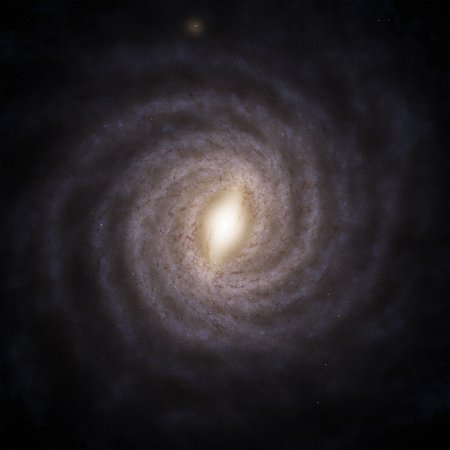Partial solar eclipse observed by SDI
The images show a large Sunspot that appeared two days earlier. The SDI telescope uses the Sun as a guide star to keep its image to be well-projected onto the entrance fibres to the spectrograph. As it is equipped with a guiding video camera, it allows us to observe any other events of interest like the partial solar eclipse in Arizona on October 23 which lasted from 14:21 to 16:45 MST with a maximum of the obscuration up to 33% at 15:37 MST (UTC-7).
PEPSI is a high-resolution echelle spectrograph recently installed on the 2x8.4m Large Binocular Telescope (LBT) on Mt.Graham in Arizona and designed to obtain spectra in integral light from the Nasmyth focal station or polarized spectra with polarimeters located at the Gregorian focus of the telescope.
As an additional functionality, PEPSI uses a small 1cm binocular Solar telescope located outside the LBT in order to feed the spectrograph with the solar disk integrated (SDI) light with a resolving power of 270 000 over the whole optical spectral range. The purpose of this instrument is to take high signal-to-noise Solar spectra continuously on every day basis over the whole solar cycle to study the pressure and gravity modes of solar pulsations in high resolution, as well as, long term line profile variation over solar cycle.

Two images showing an airplane crossing the image of the Sun during the eclipse.
Credit: AIPScience Contact: Dr. Ilya Ilyin, ilyin@aip.de, +49 331 7499-269
Media contact: Kerstin Mork, presse@aip.de, +49 331 7499-469
The images show a large Sunspot that appeared two days earlier. The SDI telescope uses the Sun as a guide star to keep its image to be well-projected onto the entrance fibres to the spectrograph. As it is equipped with a guiding video camera, it allows us to observe any other events of interest like the partial solar eclipse in Arizona on October 23 which lasted from 14:21 to 16:45 MST with a maximum of the obscuration up to 33% at 15:37 MST (UTC-7).
PEPSI is a high-resolution echelle spectrograph recently installed on the 2x8.4m Large Binocular Telescope (LBT) on Mt.Graham in Arizona and designed to obtain spectra in integral light from the Nasmyth focal station or polarized spectra with polarimeters located at the Gregorian focus of the telescope.
As an additional functionality, PEPSI uses a small 1cm binocular Solar telescope located outside the LBT in order to feed the spectrograph with the solar disk integrated (SDI) light with a resolving power of 270 000 over the whole optical spectral range. The purpose of this instrument is to take high signal-to-noise Solar spectra continuously on every day basis over the whole solar cycle to study the pressure and gravity modes of solar pulsations in high resolution, as well as, long term line profile variation over solar cycle.

Two images showing an airplane crossing the image of the Sun during the eclipse.
Credit: AIPScience Contact: Dr. Ilya Ilyin, ilyin@aip.de, +49 331 7499-269
Media contact: Kerstin Mork, presse@aip.de, +49 331 7499-469
Images
SDI image of a partial solar eclipse on 23 October.
Big screen size [1000 x 909, 570 KB]
Original size [1311 x 1192, 790 KB]
Two images showing an airplane crossing the image of the Sun during the eclipse.
Big screen size [1000 x 763, 200 KB]
Original size [1154 x 881, 220 KB]






